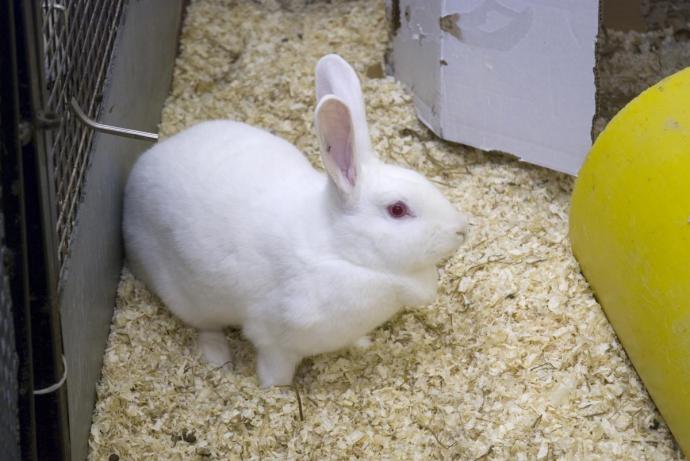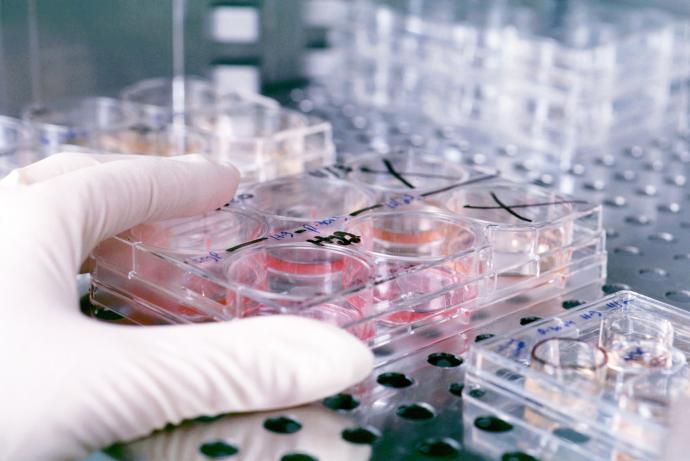Maximise
The aim of this Challenge was to develop reliable predictions which confidently classify mixtures of chemicals for acute oral toxicity, skin and eye irritation with a focus on relevance for human safety. These should fulfil acute GHS Classification and Labelling requirements for non-encapsulated agrochemical mixtures using existing information on components and formulations without the need for additional in vivo, and ideally in vitro, studies.
Through the Maximise Challenge, the team at SimOmics developed a web-deployed platform that incorporates a toxicological database and in silico approaches to better predict the GHS classification category for acute oral, skin and eye irritation in the development of agrochemical formulations.
Challenge completed

Through the Maximise Challenge, the team at SimOmics, led by Professor Jon Timmis, have developed a web-deployed platform that incorporates a toxicological database and in silico approaches to better predict the GHS classification category for acute oral, skin and eye irritation in the development of agrochemical formulations.
Conference presentation
NC3Rs/Unilever workshop (London, UK)
Application of non-animal approaches for decision-making in chemical safety assessment.
Industry presentation
Presentation to the US Interagency Coordinating Committee on the Validation of Alternative Methods.
Industry presentation
Presentation to the Chemicals Regulation Directorate of the Health and Safety Executive (HSE).
Challenge awarded
A team led by Professor Jonathan Timmis from SimOmics Ltd has been awarded £97,743 to develop the project: Integrated web platform for agro-chemical formulation toxicity classification and data sharing.
Challenge launched
Sponsored by Syngenta and Dow Agrosciences and co-funded by EPSRC, the Maximise Challenge aims to develop reliable predictions which confidently classify mixtures of chemicals for acute oral toxicity, skin and eye irritation with a focus on relevance for human safety. These should fulfil acute GHS Classification and Labelling requirements for non-encapsulated agrochemical mixtures using existing information on components and formulations without the need for additional in vivo, and ideally in vitro, studies.
Background
Innovations in chemical products are characterised by novel formulations of existing and new ingredients. For agrochemicals, these are often mixtures of one or more active substances with any known toxicity concerns and co-formulants such as surfactants, buffers and solvents that may contribute to the overall toxicity. The toxicity profiles of these mixtures are complex and are often more than the simple sum of the ingredient endpoints with the potential for additive, synergistic and compensatory effects to be observed.
Even though a proportion of these ingredients may have already been tested for their hazard characterisation in previous uses, the novel formulation must be assessed for its classification and labelling according to international guidelines such as the UN Globally Harmonized System of Classification and Labelling of Chemicals (GHS) requirements. These guidelines require in vivo studies with toxicological endpoints addressing oral, dermal and inhalation lethality, skin and eye irritation, corrosivity and skin sensitisation. The studies can cause pain and discomfort to the animals and frequently use death (or signs of imminent death) as an endpoint.
There has been progress in the use of in silico and in vitro methods for specific acute endpoints on single chemicals and mixtures. For example, there are a number of in vitro methods which can be used to identify severe eye irritants and allow classification without the need for in vivo testing. However, these eye irritation tests do not incorporate the repair mechanisms seen in the in vivo model which is considered the ‘gold standard’. There are also a number of validated in vitro methods available to determine effects on the skin including the Organisation for Economic Co-operation and Development (OECD) in vitro skin irritation test guideline (TG) 439 (OECD, 2015b) and the in vitro / ex vivo skin corrosion tests, OECD TGs 430, 431 and 435 (OECD, 2014a; OECD, 2014b; OECD, 2015a) but their predictivity for agrochemical mixtures is not proven.
In silico methods such as acute toxicity estimation calculations (ATEs) can be conducted on agrochemical mixtures to predict acute systemic end points (acute oral, dermal and inhalation toxicity). Each ingredient and its proportion in the formulation is considered in the calculation. ATE calculations have good accuracy for the systemic endpoints but limited predictivity for skin/eye irritation and skin sensitisation and regulatory acceptability of such calculations is at an early stage.
Other in silico methods such as QSARs are routinely used for the prediction of single ingredients but none of these are individually developed enough to be considered sufficiently reliable to be used for mixtures. A recent CRACK IT Challenge (QSARs Mix, 2014) was successful in the development of a more specific QSAR approach for assessing skin and eye irritation for petroleum chemical mixtures but an integrated solution that considers multiple chemical and toxicological data points that can be used to assess hazard characterisation for agrochemical mixtures is required.
This Challenge aims to develop innovative, integrated in silico approaches to better predict the GHS classification category for acute oral, skin and eye irritation in the development of agrochemical formulations without using animals or generating new in vitro data. The Challenge also requires a disruptive business model whereby access and storage of industry data can be managed to provide predictive testing strategies for complex mixtures.
It is expected that this approach will have broader applicability to other industry sectors.
3Rs benefits
Acute toxicity studies are used to assess the safety of the agrochemical products and to gather information for regulatory purposes. While industry continues to refine these studies, they can involve the use of high concentrations of test items which can lead to severe suffering, and sometimes death as an endpoint.
Challenge winner
Project team led by:
- Professor Jonathan Timmis, SimOmics Ltd, £97,743.
Full Challenge information
Assesment information
Agrochemicals are typically formulations of numerous substances that each contribute to the overall toxicity profile of a product. Even though a proportion of these ingredients may have already been tested for their hazard characterisation in previous uses, the novel formulation must be assessed for its classification and labelling according to international guidelines such as the UN Globally Harmonized System of Classification and Labelling of Chemicals (GHS) requirements.
The team led by Professor Jonathan Timmis from SimOmics Ltd developedan integrated web platform that incorporates a toxicological database and in silico approaches to better predict the GHS classification category for acute oral, skin and eye irritation in the development of agrochemical formulations.
The Maximise database uses existing toxicological data from the testing of similar agrochemical formulations, individual active substances and any co-formulants. This platform enables the user to suggest new agrochemical formulations as a mixture of known substances. The new formulation is tested across a range of in silico classification prediction algorithms including a neural network and an expert system that encodes GHS guidance logic for bridging principles and the calculation method. Weight-of-evidence reports are generated by the platform summarising the GHS predictions, which can be used to inform regulatory submissions.
Over a thousand animals are used in the agrochemical industry per year for acute oral, skin irritation and eye irritation studies. The approaches developed in this Challenge could replace the need for new animal studies by reusing previously generated animal-derived toxicity data in GHS classifications for new formulations. The technology is also applicable to other sectors such as pharmaceuticals that also rely on animal experimentation to assess formulation toxicity.
For more information on the Maximise platform, please contact the CRACK IT team.





